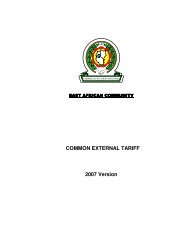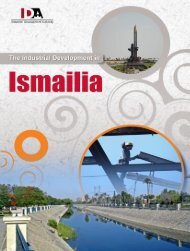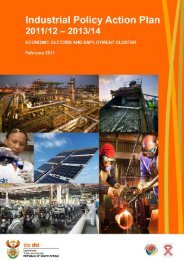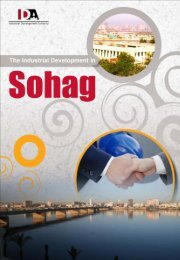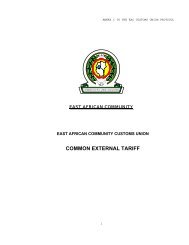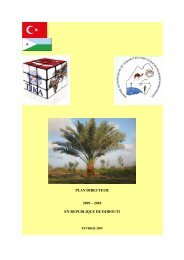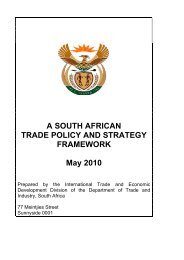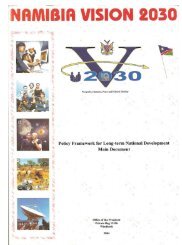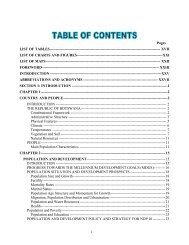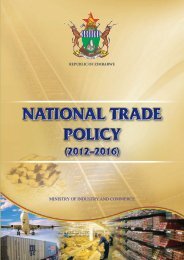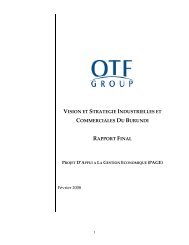rwanda national export strategy - minicom
rwanda national export strategy - minicom
rwanda national export strategy - minicom
Create successful ePaper yourself
Turn your PDF publications into a flip-book with our unique Google optimized e-Paper software.
RWANDA NATIONAL EXPORT STRATEGY<br />
expanding factory capacity to process green leaf, but also in terms of processing new tea types to ensure<br />
product diversification. The <strong>strategy</strong> also states the need for improved marketing of teas by targeting<br />
specific channels for high-end teas. The GoR continues to support training for management of<br />
cooperatives, and for agronomists, auction publicly owned factories and supports packaging efforts in<br />
Dubai. Several private firms are moving to higher value teas and organics. The NES prioritises the<br />
following issues to enable stakeholders to reach <strong>export</strong> targets.<br />
Priority Issues and Challenges<br />
Issue #1 Improve yield and quality of green leaf. A key constraint to increasing production and<br />
processing is fertilizer: its cost, availability, suitability and distribution, and costs have spiked by 300% in<br />
the past two years thanks to gasoline prices and other variables. Green leaf quality is compromised by<br />
poor farming practices, which will require training and/or better incentives to farmers, 53 as well as<br />
transport methods. Agronomist training can help improve the quality.<br />
Issue #2 Improve the quantity and quality of made tea. In order for factories to be able to reach<br />
targets of tea produced, capacity will need to be almost doubled. Three factories have recently expanded<br />
production, but more needs to be done, as some factories turn away from green leaf due to capacity<br />
issues.<br />
Issue #3 Reduce the cost of production. The cost inputs and machinery that are mostly imported<br />
(labour, power, and transport) are higher than other countries in the region, yet Rwandan teas have to<br />
compete on an even keel with Kenyan teas in Mombasa.<br />
Issue #4 Target markets with diversified value-added products through developed distribution<br />
channels. The oversupply of bulk black tea on inter<strong>national</strong> markets is likely to worsen over the next five<br />
years. Rwanda needs to move from producing almost solely bulk black tea, the majority of which is sold<br />
at auction producing better quality teas, to producing diversified teas including green, white or orthodox<br />
teas, and branded Rwandan packaged teas, which are sold directly to buyers using strong relationships.<br />
4.3.3 COFFEE<br />
Rwanda‘s coffee industry is a traditional <strong>export</strong> and a priority sector for the GoR and its partners. Rwanda<br />
has excellent growing conditions for Arabica coffee, which is evidenced in the growing number of awards<br />
its specialty coffees receive, its increased demand worldwide, and the higher premiums paid. More than<br />
10% of Rwanda‘s coffee is now fully washed; most of it falls in the category of specialty coffee and is in<br />
high demand from gourmet roasters, and retailers such as Sam‘s Club and Starbucks.<br />
Over the last decade, <strong>export</strong> receipts from the coffee sector have averaged US$58M and held steady as<br />
one of Rwanda‘s major foreign exchange earners. However, rising inter<strong>national</strong> prices for coffee are<br />
currently compensating for a now dropping <strong>national</strong> yield. Coffee revenues generated US$56M in 2010.<br />
This is an increase from US$37M in 2009, but it was hampered by an extended dry season in some coffee<br />
producing areas. 54 While increased investments in the sector increased the productivity from 0.7 tons of<br />
green coffee / hectare over the last decade, soil acidity, lack of distribution of appropriate fertilizer and<br />
cyclical coffee production cycles currently conspire to bring yields down.<br />
According to the 2009-2012 <strong>national</strong> coffee <strong>strategy</strong> developed by MINAGRI, OCIR CAFÉ, and the OTF<br />
Group, revenues are projected to reach US$115M by 2012. The NES projects more conservative<br />
revenues, reaching $US 89M in 2012, due to downward revisions of current production levels and other<br />
factors. Increasing the quantity and quality of coffee as well as developing value added products (e.g.<br />
fully washed coffee, roasted packaged coffee) will be critical to the continued success and future growth<br />
53 Per the Strategy, in addition to approximately $250,000 allocated for training and $85,000 for farmer incentives by OCIR-Thé, there is a gap of<br />
US$750,000 for related agronomist support and worker training through 2013,. Through training on plucking, the Pfunda factory increased<br />
yields by 16%.<br />
54 Comments attributed to the Director General OCIR-CAFÉ, Alex Kanyankore in The New Times Daily Newspaper, October 6 th 2010, page 4.<br />
Page 32



